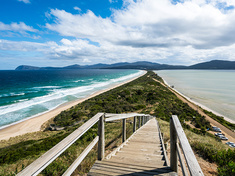
Five Islands of Tasmania
First published: Tuesday July 4th, 2023
Report this blog
Introduction
G'day everyone. It's toowise QuizzerBros here. As a slight not-so-special episode of toowise's famous blog series, he has been kind enough to grant me permission to make a Tasmanian edition. Now we may be skipping ahead slightly in toowise's world tour, but assuming that Tasmania itself wasn't going to be featured in its own blog, I thought it would be fun to one myself. So sit back and enjoy (hopefully) learning something new about these islands of Australia's island state!
Maria Island / wukaluwikiwayna
Maria Island (pronounced Ma-ry-ah), located off Tasmania's East Coast and south of the stunningly picturesque Freycinet Peninsula, is itself one of Australia's most beautiful locations. It bring together Tasmania's rugged coast, beaten by strong winds and fierce waves, along with convict heritage, and loads of deiverse wildlife. There is a lot to unpack on this tiny island, but here we go...
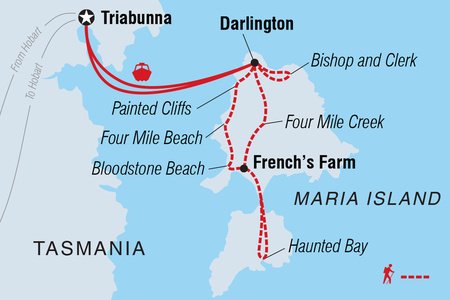
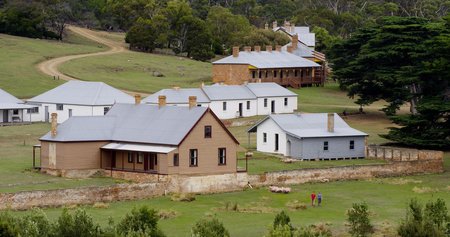
Maria Island was named by Dutch explorer Abel Tasman after the wife if Anthony Van Diemen who was the governor of the Dutch East Indies. Interestingly the state of Tasmania was called Van Diemen's Land for over 200 years, but that's another story. The islands' only residents are national park rangers, and overnight campers. Maria Island is small, only about 155km2 but what it lacks in size it makes up for in natural beauty and cultural heritage.
Maria Island can be accessed via a ferry which leaves the mainland town of Triabunna, across the Mercury Passage and docks in the islands Darlington settlement. The Darlington Township is home to the best-preserved convict probation centre in Australia. Darlington was one of Tasmania's main convict precincts during the 1830's as its location on an island made it essentially impossibly to escape.
There are many walking and biking tracks around the island, especially in the north that connect the fascinating landscapes and historical sites the island is scattered with. There are too many iconic attractions to list here, but the main ones include the Painted Cliffs, Fossil Cliffs, Bishop and Clerk, Mount Maria, McRaes Isthmus, and Haunted Bay (see pictures below and to the right).
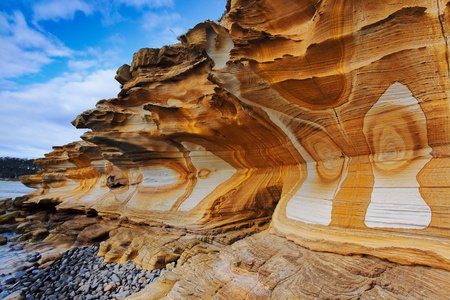
Lastly, the island is also renowned for its wildlife - often called the Noah's Ark of Tasmania. It is most famous for its plentiful supply of wombats, which are so tame you could pat them - though you're not allowed to. The island is also home to wallabies, pademelons, possums, echidnas, kangaroos, and eagles. Additionally Maria Island is the best place to spot the endangered forty-spotted pardalote, only found in Tasmania. The island is also home to a Marine Reserve where there are a vast array of fish and mollusks as well as fur seals, dolphins, southern right and humpback whales, as well as the occasional leopard seal and orca pod.
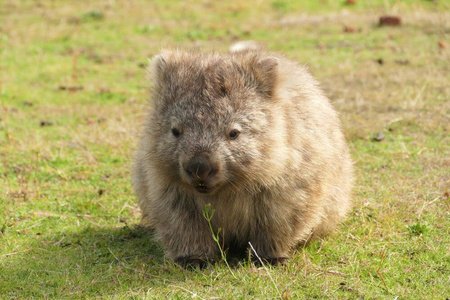
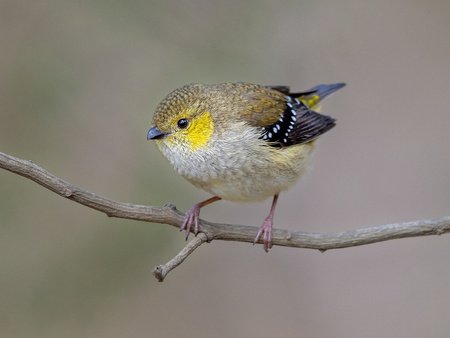
In 2012 and 2013, 28 Tasmanian devils were released on the island in an attempt to save the species and nurture a tumour-free population. Now there are an estimated 100 devils on the island. The devils however have caused a major adverse effect for other animals, including little penguins, geese, brushtail possums either being completely eliminated from the island, or their numbers reduced dramatically.
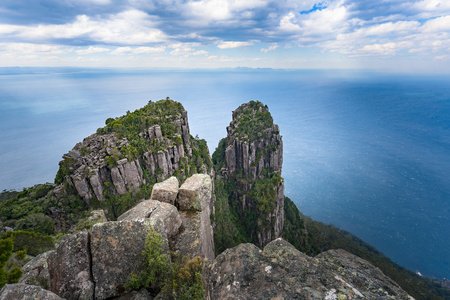
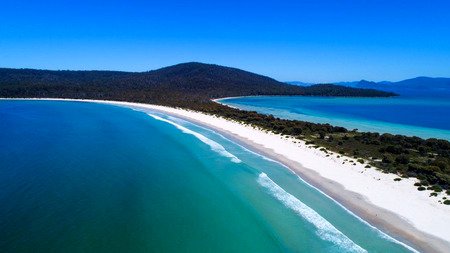
Here is the Maria Island National Park website for more information.
Flinders Island
Flinders Island is the largest (1,367km2) and second-most populous (around 1,000) island in Tasmania, other than Tasmania itself. It is located in the Furneaux Group (named after Tobias Furneaux by James Cook) on the eastern side of the Bass Strait. Named after famous British explorer Matthew Flinders who travelled around with George Bass travelled extensively around southern Australia at the turn of the 19th century.
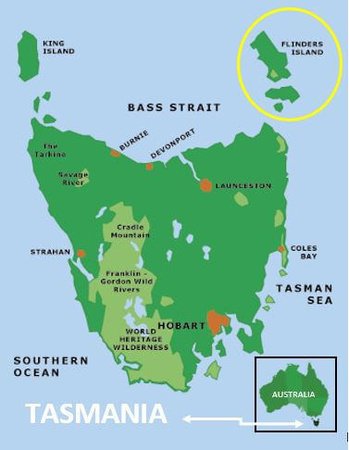
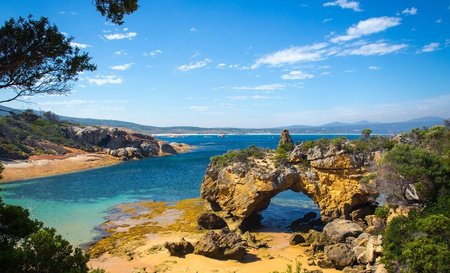
The largest town on Flinders Island is called Whitemark, and has a population of around 300 people. The island can be accessed via plane from either Launceston, Hobart, or Melbourne, or by a freight barge that leaves from the town of Bridport every week.
Flinders Island is a rural island with many cattle and sheep farms across the island, and half of the island is dominated by rugged granite mountains, of which the tallest is Mount Strzelecki (782m). Coastal areas are commonly characterised by large sand dunes and lagoons. There is also the Strzelecki National Park, home to Trousers Point, one of the more picturesque beaches in Tasmania.
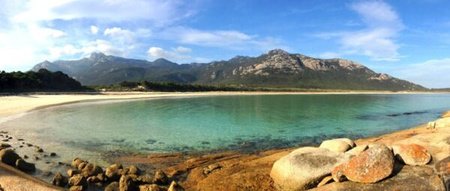
During the Black War fought between European settlers and the Aboriginal people in the 1830's a few hundred Aboriginal people were exiled to Flinders Island where they were deemed to be 'safe' from the Europeans. The conditions however were poor, and the relocation scheme didn't last long.
Just off Flinders Island is another island (making this Six Islands of Tasmania) called Mount Chappell Island. Although access is fairly restricted and you must get permission from the Aboriginal people to go there (which doesn't happen very often), it is home to some of the largest tiger snakes in the world. The snakes fill up on muttonbird/shearwater chicks during the nesting season, and then don't eat for up to 8 months. Some can get up to 2 metres long!
Tamar Island
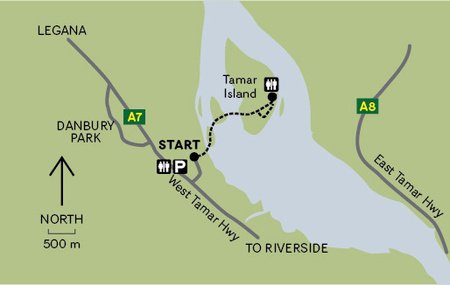
Tamar Island is situated in the Tamar River/Estuary (kanamaluka) in Tasmania's north. It is the Estuary's largest island, and forms part of the Tamar Wetlands Conservation Area. The area is a popular walking spot, just 10 minutes from the Launceston CBD, and with boardwalks and bird hides scattered around. The wetlands are home to many different species of birds and animals, from the plenteous supplies of black swans, Tasmanian native hens, purple swamphens, and Australian shelducks, to more rare and migrant species like the royal spoonbill, and several species of ibis, egrets, and herons. The wetlands is also home to the majestic white-bellied sea eagle, Australia's version of the bald eagle. As far as other animals go, the wetlands and Tamar Island is home to many pademelons, possums, copperhead snakes, and many species of frogs and fish.
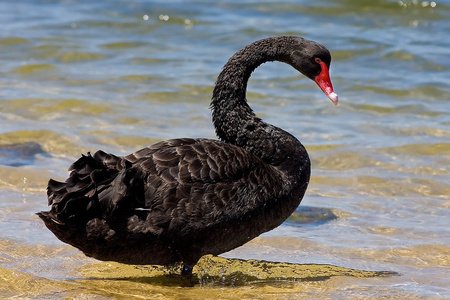
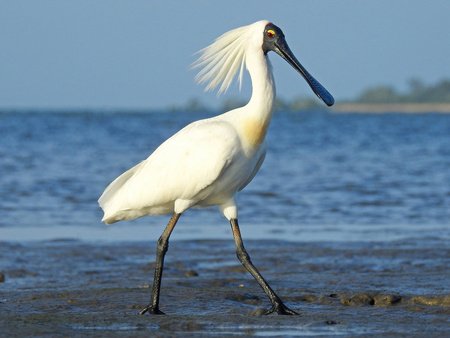
Speaking of animals, there is an interesting story of a resident bull on the island - by far the largest animal there - called Bruno. Bruno lived on Tamar Island for over 20 years, trapped by the river on both sides. Over the years, many attempts were made by pitiful residents of the Tamar Valley to remove him from his restricted island and loneliness, but all failed. It seemed that Bruno quite enjoyed his life 'batching' on his own, and could get aggressive if approached. The danger that he posed to people enjoying the wetlands meant that he was eventually tranquilised by a vet, and transferred to a nearby farm - or if you believe the local legend, transformed into a delicious engus burger at the local joint...
Sarah Island / langerrareroune
Sarah Island is located in the Macquarie Harbour on the West Coast of Tasmania. It is part of the Tasmanian World Heritage Wilderness Area - the highest ranking UNESCO area in the world, fulfilling 7 of 10 criteria. The Macquarie Harbour is Australia's second largest harbour behind Port Philip Bay in Victoria, and it is 6 times larger than Sydney Harbour! But anyway, more about the island in the harbour...
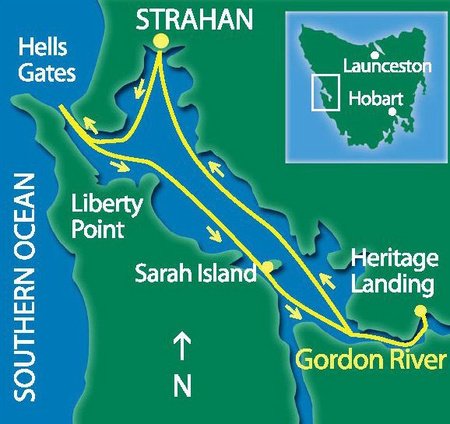
Sarah Island is a tiny island (about 20 acres), and was Van Diemen's Land's first penal settlement, and is widely regarded as one of the harshest settlements in all of transportation's history. Its location in the aforementioned Macquarie Harbour made it ideal, as it was extremely remote, and of course, an island, making it very difficult to escape. To make it even harder, the only entrance (and exit) to Macquarie Harbour is through a shallow, narrow and notoriously treacherous bottleneck called Hells Gates. Despite this, there were multiple escapes from the island, each of them very interesting...
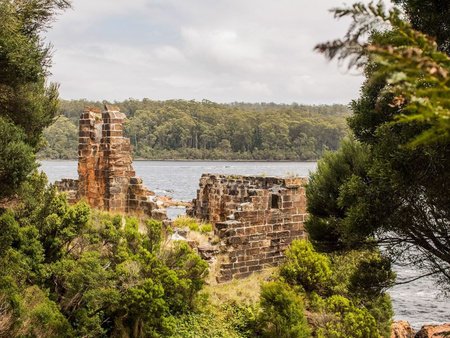
Life as a prisoner on the island was severe. Sarah Island was a place for secondary offenders (convicts who had exhibited bad behaviour at a primary penal settlement). Convicts were made to perform rigorous tasks like clearing the island of all its trees to make ships. This however exposed the island to harsh and damaging winds, and so they built a massive protective wall around the outside. Conditions were mostly cold, in the winter sometimes below freezing, and the taskmasters were unforgiving.
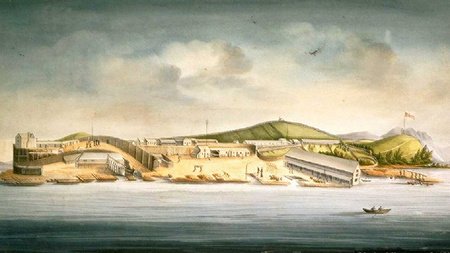
Some of the more famous escapes include that of Matthew Brady and his company. Brady and his gang hijacked a ship and sailed to the coast of the harbour before setting out on a life as bushrangers. Brady then became Tasmania's most famous bushranger, and was affectionately known as the 'gentlemen bushranger' due to his kindhearted nature towards his victims, especially exhibited towards women.
Perhaps the most famous escape/s was made by a man called Alexander Pearce. Pearce was an Irish convict who escaped with seven others into the Tasmanian wilderness. The group was faced with harsh environment and starvation, and over the next few months, only three were left (three had split, two had been killed and eaten by the others). Soon one of the three was bitten by a snake and so was killed and eaten, leaving just Pearce and one other. Both were exhausted, but were intent on not falling asleep knowing they would subsequently be struck with a blow from the axe and eaten. Pearce won out this tense dual, and then after raiding an Aboriginal campsite and stealing some sheep was caught and taken to Hobart Town. He pleaded guilty to cannibalism, but was not believed and so was sent back the Sarah Island. Pearce was not content to stay however, and escaped again with one other companion. He was on the run for only ten days (far less than 113 days the first time) when he was caught and sent to the Van Diemen's Land Supreme Court in Hobart. There Pearce again confessed to murder and cannibalism, explaining that he killed his companion after discovering he could not swim. He was believed this time as there were remains found in his pockets and so he was hanged in Hobart Town Gaol in July 19, 1824.
After around 12 years of operation on Sarah Island (1821-1833) it was clear that it was not a sustainable venture, being far too expensive, and remote. In the months before it closed, only a dozen convicts remained on the island. The last ship built there was the Frederick, which was planned to be sailed to the penal settlement at Port Arthur.
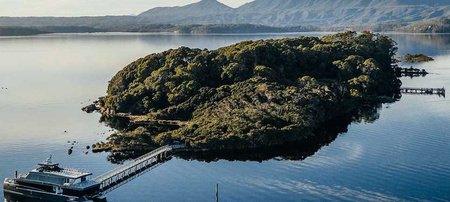
In January 1834, ten convicts, led by an experienced former sailor (James Porter) hijacked the ship and sailed it through Hells Gates. They then made the lengthy journey across the Pacific Ocean all the way to Chile. Once in Chile, they were allowed to stay, although were threatened to be executed as pirates when the governor of Valdivia didn't believe their story. Some of the convicts then moved to the United States or Jamaica, although Porter stayed as he had a wife and a child already living in Chile. Today, Australia's longest running play is performed nightly in the nearby town of Strahan on the banks of Macquarie Harbour, called 'The Ship That Never Was', is based on these events.
Macquarie Island
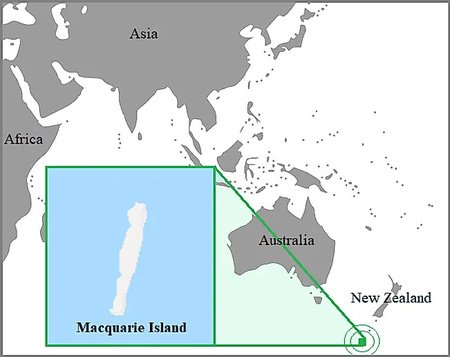
Macquarie Island (128 km2) is located in the southwest Pacific Ocean, about halfway between New Zealand and Antarctica. The uninhabited island was discovered by Frederick Hasselborough in 1810, although it was likely visited before as there was a ship wreckage of some description there at the time. Hasselborough was searching the area for new sealing grounds when he discovered the island, and he promptly claimed it for Great Britain and annexed it into the colony of New South Wales.
For the next century the islands' penguin and seal populations were hunted for their oil - almost to extinction. It was originally planned to be used as an extremely remote penal settlement, but that idea was scrapped pretty soon because it was a stupid idea. The island was first mapped by Russian explorer and naval officer Fabian Gottlieb von Bellingshausen. Macquarie Island was transferred to Van Diemen's Land in 1825. After a brief stint of being leased to a New Zealand politician, the island was used as a base for the Australian Antarctic Expedition in the early 1900's.
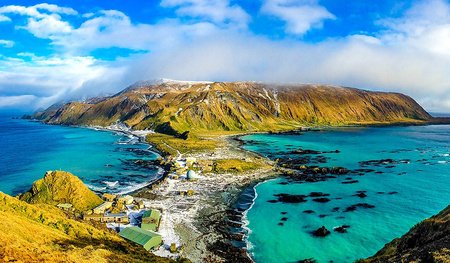
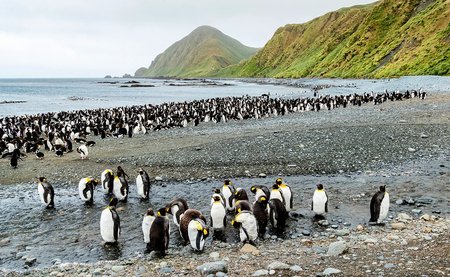
The island became a Tasmanian State Reserve in 1933, and was a designated UNESCO World Heritage site in 1997. Now the island has a research station with 20-40 people running it at any time.
Macquarie Island is home to many interesting animals including many species of fur seals, albatross, and skuas, the leopard seal, and apparently over 80,000 individual southern elephant seals! There are also southern right whales, orcas, and sperm whales. The island is also home to two endemic breeding birds - the royal penguin and the Macquarie shag/cormorant. King penguins, rockhopper penguins, and gentoo penguins also breed here. Macquarie Island is the largest island in the world that has successfully eradicated pest species (rabbits, mice, rats, cats), but only after they had been responsible for the extinction of at least three native species.
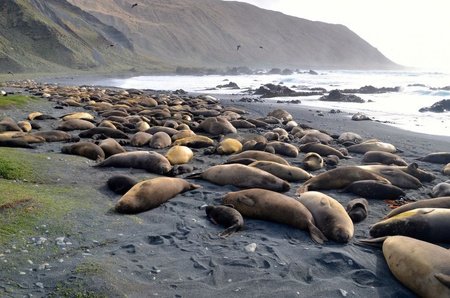
Conclusion
Thank you for reading my blog, I hope you found some of it interesting and the rest didn't bore you too much. There were some islands that deserved a spot but missed out like King Island, Bruny Island, Hunter Island, Cape Barren Island, Robbin Island, Three Hummock Island, Schouten Island; anyway, I think you get the point! And of course thanks to the amazing toowise and go check out his original series if you haven't already - he does a much better job than myself. Until next time...

"You've done me proud" as my granny used to say. I can't really agree with the last sentence, I think you've made an excellent job of it.
I had heard of a couple of them, in fact I read about Sarah Island a few years ago in a book about the history of the penal colonies. It was definitely a dark time in Britain's past.
This was a very well written and interesting blog, do you want to take over the rest of the series ?
Joking obviously (I think). I shall have to get writing now to catch up the series, I've been a little lazy recently and need to get going.
I had no idea that Tasmania had its own smaller islands, so didn't know about any of the islands and their interesting stories, erm except Sarah Island, it had quite a dark past!